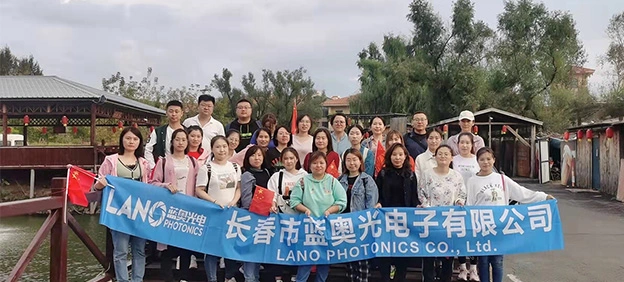Line scan cameras exhibit significant advantages in scanning speed, thanks to their unique working principle: each operation only scans one line of the image. Specifically, line scan lenses capture one line of image in a very short amount of time through high-speed moving photosensitive elements combined with precise synchronous control. This efficient scanning method allows line scan lenses to easily meet the real-time detection needs on high-speed production lines, ensuring that each item can be quickly and accurately scanned and recorded.
Area scan cameras need to scan the entire image area line by line from top to bottom, which takes more time. Therefore, when area scan cameras face fast-moving objects, it is often difficult to capture clear images, leading to reduced accuracy and reliability of detection results. This limitation of area scan cameras is particularly evident on high-speed production lines, where they cannot meet the real-time detection needs of fast-moving objects.
Concept of Line Scan Lenses
Line scan lenses are high-performance FA lenses designed for use with line scan series cameras and are suitable for various high-precision inspections.
Features of Line Scan Lenses
Designed for high-resolution scanning applications, up to a maximum of 12K
Maximum compatible imaging area of up to 90mm, using longer line scan lenses
High resolution, with a minimum pixel size of 5um
Low distortion rate
Magnification ratio from 0.2x to 2.0x
Choosing a line scan camera lens requires thorough consideration and detailed analysis in various aspects to ensure the best possible imaging results.
Consider Camera Specifications and Application Requirements
First, we must fully understand the camera's specifications, including but not limited to sensor size, pixel size, resolution, and spectral sensitivity. These parameters directly affect the choice of line scan lens because different line scan lenses will have varying imaging effects when matched with cameras of different specifications.
At the same time, we need to calculate the required field of view (FOV) based on specific application requirements, such as object size and working distance. This step is crucial as the size of the field of view directly determines the range of images we can capture.
Choose the Appropriate Focal Length and Lens Characteristics
When selecting a line scan camera lens, focal length is an essential factor. We can use the formula "Focal Length = Sensor Width × Working Distance / FOV" to calculate the required focal length range and filter out compatible line scan camera lenses.
In addition, we need to pay attention to other characteristics of the line scan lens, such as aperture size, lens resolution, and optical distortion. The aperture size affects the amount of light entering the lens, thereby influencing the brightness and clarity of the image; the lens resolution needs to match the camera's resolution to ensure image detail; and optical distortion should be minimized to avoid image distortion.
For specific applications, such as low-light environments or scenarios requiring environmental sealing, we also need to consider whether the lens has corresponding special performance.
Testing and Verifying Lens Performance
After initially filtering out the line scan lenses that meet the requirements, we need to perform actual testing and verification. This usually involves mounting the lens onto the camera and capturing real objects to observe the imaging effect.
In this step, we need to focus on the clarity, brightness, color reproduction, and any noticeable distortion in the imaging. By comparing the imaging effects of different line scan lenses, we can finally determine the most suitable line scan lens for our application.
In summary, choosing the appropriate line scan camera lens requires comprehensive consideration in multiple aspects. By thoroughly understanding the camera specifications, calculating the required field of view, choosing the appropriate focal length and lens characteristics, and performing actual testing and verification, we can ensure that the selected lens works harmoniously with the line scan camera, providing high-quality imaging tailored to the application needs.
This is the first one.


